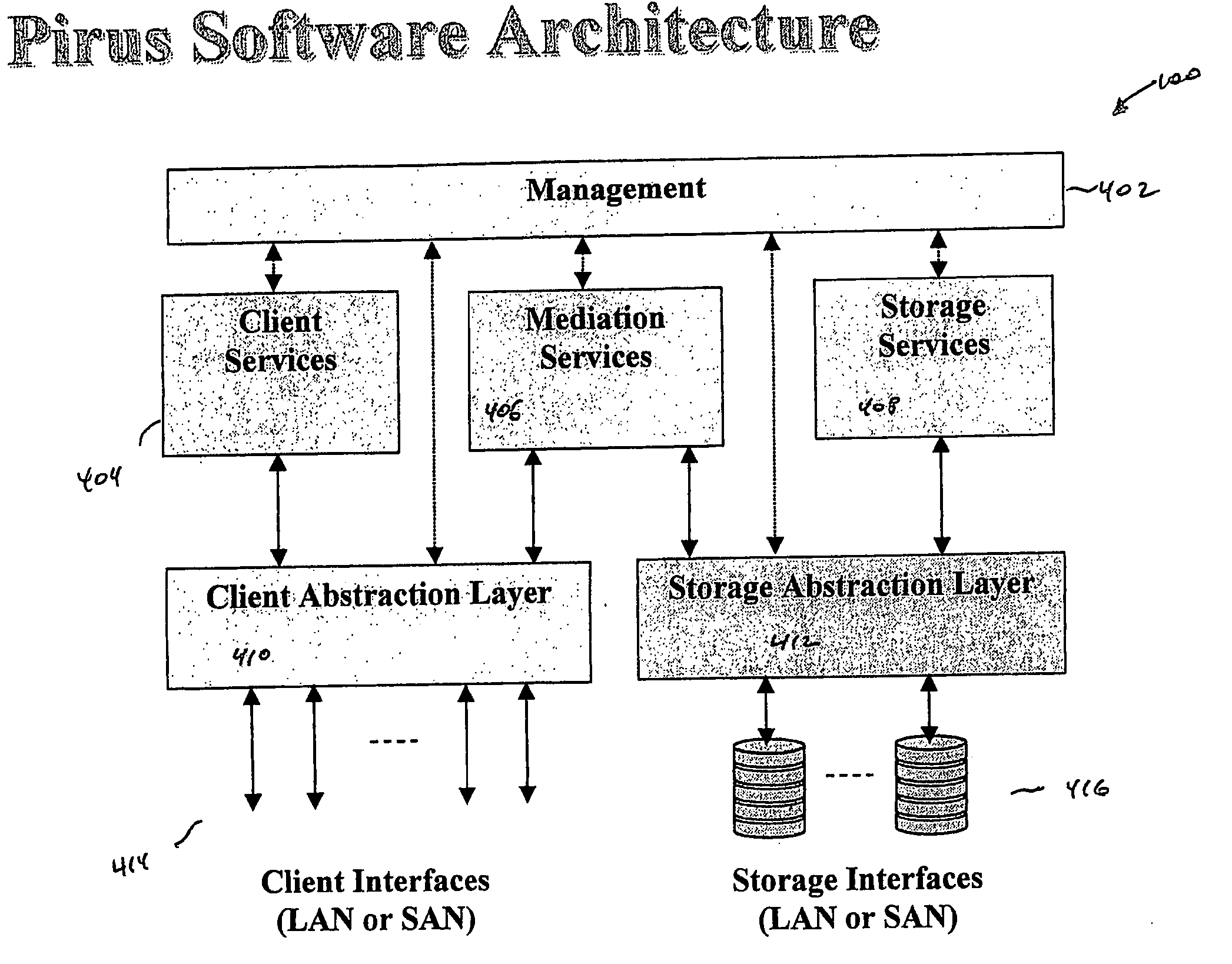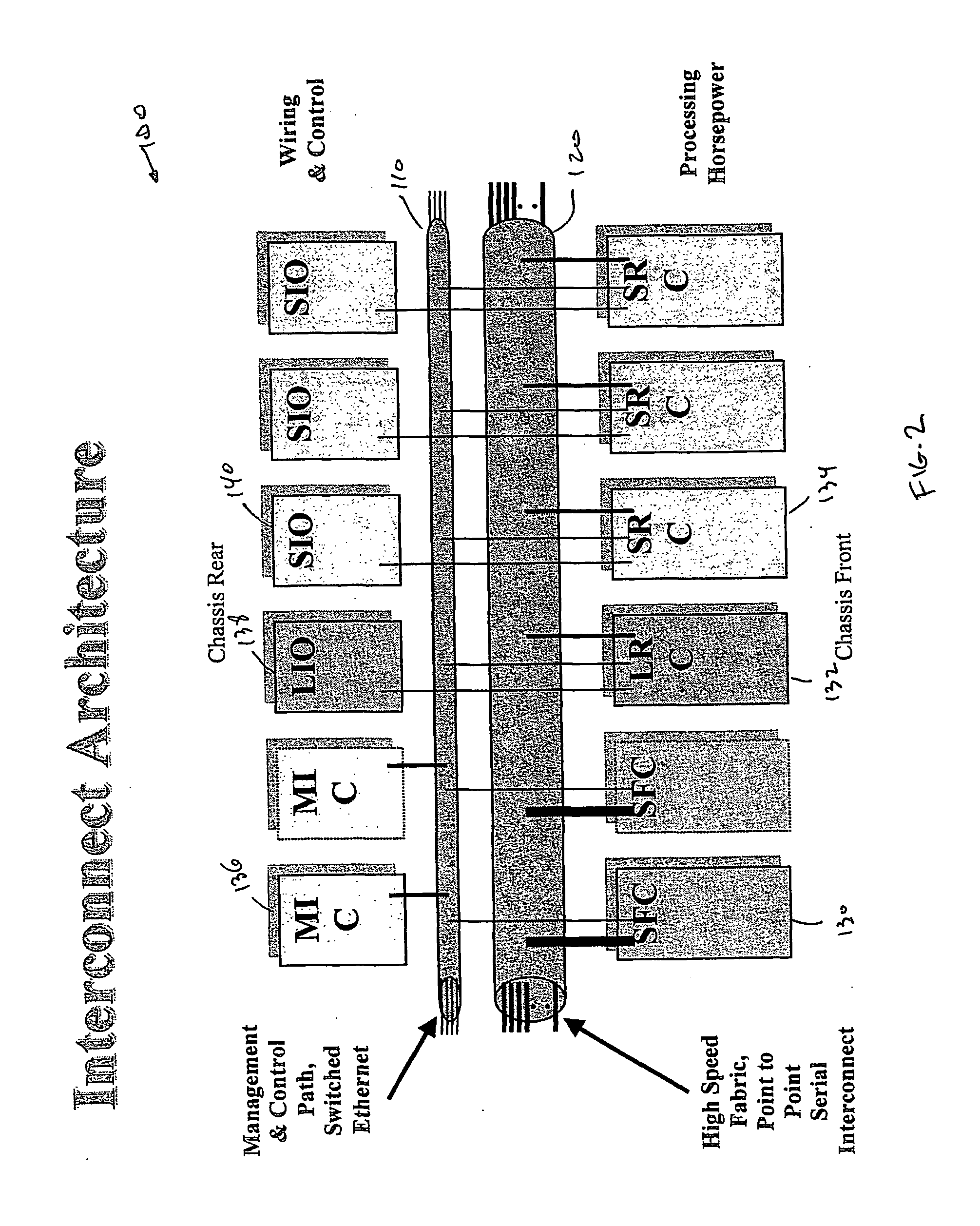Switching system
a technology of switching system and switching device, applied in the field of switching system, can solve the problems of not enabling seamless connection and interoperability between disparate storage platforms and protocols, not well-adapted to communicate with one another, and san devices do not integrate well with existing ip-based management systems
- Summary
- Abstract
- Description
- Claims
- Application Information
AI Technical Summary
Benefits of technology
Problems solved by technology
Method used
Image
Examples
examples
Set 2
2 UML Static Structure Diagram
[0643] FIG. 37 is a representation of the NCM, IXP and NAS server classes. For each, the top box is the name, the second box contains attributes of an instance of this class and the bottom box describes the methods each class must implement.
Attributes Description
[0644] Data local to an instance of the class that make it unique.
Methods Description
[0645] Those preceded with a + are public and usually invoked by receiving a message. The method is preceded by the name of the sender of the message surrounded by >. Calling out the sender in the description should help you to correlate the messaging scenarios described in this document to implemented methods in the classes. Those preceded by a--are private methods that may be invoked during processing of public methods. They help to organize and reuse functions performed by the class.
VII. System Mediation Manager
[0646] The following discussion sets forth the functional specification and design for the Med...
PUM
 Login to View More
Login to View More Abstract
Description
Claims
Application Information
 Login to View More
Login to View More - R&D
- Intellectual Property
- Life Sciences
- Materials
- Tech Scout
- Unparalleled Data Quality
- Higher Quality Content
- 60% Fewer Hallucinations
Browse by: Latest US Patents, China's latest patents, Technical Efficacy Thesaurus, Application Domain, Technology Topic, Popular Technical Reports.
© 2025 PatSnap. All rights reserved.Legal|Privacy policy|Modern Slavery Act Transparency Statement|Sitemap|About US| Contact US: help@patsnap.com



